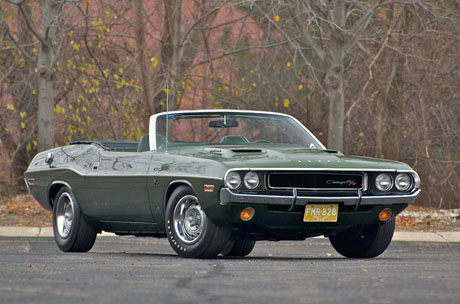No chassis number available
Finding a Hemi Challenger convertible today is no ordinary thing, especially when one considers that Dodge produced only nine such cars in 1970. Our subject car, the second one produced, and the first to hit the street, did so under unusual circumstances: it was sold by the dealer principle at cost to a friend while they were playing their weekly game of checkers. In return for the sizeable discount, the buyer, a Poplar Bluffs, MO anesthesiologist named Langford Palmer, agreed to the dealer’s one caveat, that he race it on the street. It was a win-win accord: Palmer and his Challenger built a reputation as unbeatable, and the Dodge dealer’s sales went through the roof.
Palmer eventually sold the Challenger to a Ford dealer, who transplanted the Hemi into his boat, put a smaller engine in the car and sold it to a farmer near Rapid City, SD. That might have been the end of the story, had the Hemi engine not been discovered years later in a Denver, Colorado machine shop, its owner having abandoned it when he could not pay the shop’s bill for machining services.
A buyer, Mr. Jim Lynch, paid the shop’s bill, located Langford Palmer through Chrysler’s records division, and through Palmer managed to purchase the car from the Rapid City farmer. Lynch then took both the engine and the Challenger to Roger Gibson for restoration in 1993. Gibson completed the project in 1996, after insisting on factory correctness rather than the over-restored approach initially favored by Lynch.
Today the car remains factory correct and expertly detailed, just as Roger Gibson insisted on when he first undertook its restoration. The under-hood detailing in particular has received special attention in a Mopar Action magazine article about the car, in which Gibson recounted the fine points of correctly finishing this exceptionally rare Hemi Challenger to Certified Reference status.
Number two in the total production sequence of nine Hemi Challenger convertibles, the car comes with copies of the original dealer paperwork, including the bill of sale.

